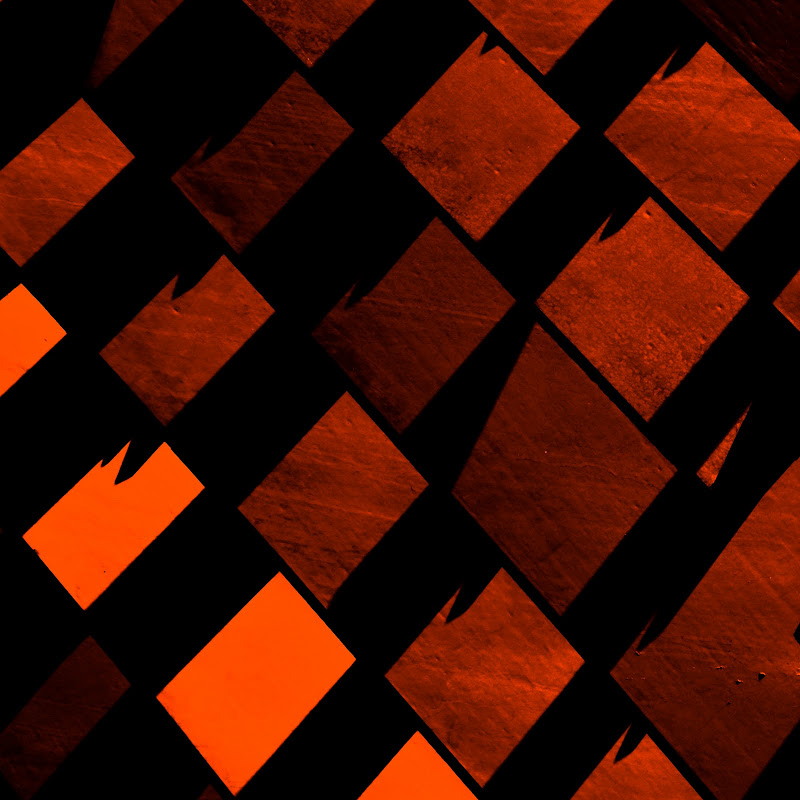Archive for October 2011
Early fall on Old Rag Mountain
2011/10/30
by Unknown
Categories:
Florian's photos
|
Leave a comment
What is a photograph?
In my opinion, each photograph has content and qualities. The content is the actual subject that was photographed; a tree, a person, an animal a cloud or a complex landscape for example. For me, this is the YES or NO in photography; the bird that you wanted to photograph was either there or not (even Schrödinger's cat was either dead or alive and not both at the same time, despite quantum mechanics). As a viewer, I expect that the entire content of a photograph existed at the location and the moment where and when the shutter was released.
In contrast to content, the qualities of a photograph are subjective, vary on a continuous scale and reflect the vision of the photographer. The qualities are those characteristics that everybody sees differently and comprise the color, contrast, sharpness, exposure or saturation, to name a few. Every photographer, lens or accessory displays a subject slightly differently or emphasizes another aspect of the same subject. But there was a subject (which became the content) in the real world, outside of the photographers imagination, as the source of all of these aspects. Just because the grass is greener or the sky is bluer for some people does not mean that the grass and sky do not exist or are something else. And even if a glass is half empty for some and half full for others, there is still a glass with something in it.
I think that this leads to a rather simple definition for what a photograph is: For me, an image qualifies as a photograph if only the qualities were adjusted while the content has been left untouched after it was captured by the camera. I do not remove, copy, clone, turn or flip selected parts of a photograph or add elements from one photograph to another. However, I do alter and adjust, you may even say manipulate, the qualities of my photographs. Some of you may state that this view of mine is much too narrow and restrictive and that my definition of a photograph only fits documentary photography and excludes the art photography. Again, I do not agree.
First, the documentary aspect is inherently and inseparably linked to photography. Second, for me the art in photography does not lie in the subject, but in the eye of the capturer and her or his ability to translate a real-world discovery into a two-dimensional image. For me, the goal and the challenge is not to create an amazing illustration no matter how, but to find and photograph something in the real world in a way that results in an amazing photograph. Digitally manipulating the content of my photographs would be cheating for me and therefore completely defy my goals and values.
I would like to emphasize that this is my view that I hold because anything else would betray my values. I think that everybody has to decide for her- or himself what to alter and what to leave untouched and I acknowledge everybody's freedom to set her or his rules. In many ways it is a question about means and ends.
".... I often had to pass over photographs because in a picture of masses of animals invariably one would be wandering in the wrong direction, thereby disrupting the pattern I was trying to achieve. Today, the ability to digitally alter this disruption is at hand. For the first time in Migrations, I have embraced this technology, taking the art of the camera to its limits. Since this is an art book and not a treatise on natural history, I find the use of digitalization perfectly acceptable, and in a small percentage of the photographs I have enhanced the patterns of animals much as a painter would do on a canvas."
 The front cover of Migrations with digitally cloned zebras and other, less controversial books from the oeuvre of Art Wolfe.
The front cover of Migrations with digitally cloned zebras and other, less controversial books from the oeuvre of Art Wolfe.
2011/10/26
by Unknown
Categories:
Photosophical
|
Leave a comment
Zurich sea of clouds
During fall and winter, fog is a common guest in Zurich. The moisture from the lake and the entrapment of cold air by the chain of hills around Zurich (which causes a temperature inversion: cold air at the bottom covered by warmer air above) can lead to the formation of ground or high fog, which can prevail for days or weeks. You never know exactly if, when and where it dissolves and these are the times when on the weekends everybody heads to the mountains to hike, climb, ski or tobogganing.
2011/10/23
by Unknown
Categories:
Florian's photos
|
Leave a comment
The tripod, a bear and sharp photographs
2011/10/20
by Unknown
Categories:
Toolbox
|
Leave a comment
Florian's photos: Mystic foggy winter forest
2011/10/18
by Unknown
Categories:
Florian's photos
|
Leave a comment
Florian's photos: Trees
2011/10/15
by Unknown
Categories:
Florian's photos
|
Leave a comment
My photo treasures: Paul Nicklen
2011/10/13
by Unknown
Categories:
My photo treasures
|
1 comment
Autumn colors: flittering cherry leaves
As a comparison, this second photograph was taken at the same time of the same tree but obviously with a much shorter shutter speed (and a tripod, as the first one as well). I also quite like this photograph, but it is very different and, in my opinion, less special the the flittering leaves above.
2011/10/09
by Unknown
Categories:
Florian's photos
|
Leave a comment
My photo treasures: Tom McLaughlan
 Photograph © Tom McLaughlan
Photograph © Tom McLaughlan
2011/10/06
by Unknown
Categories:
My photo treasures
|
1 comment
Autumn colors: Moved autumn trees
2011/10/02
by Unknown
Categories:
Florian's photos
|
Leave a comment










